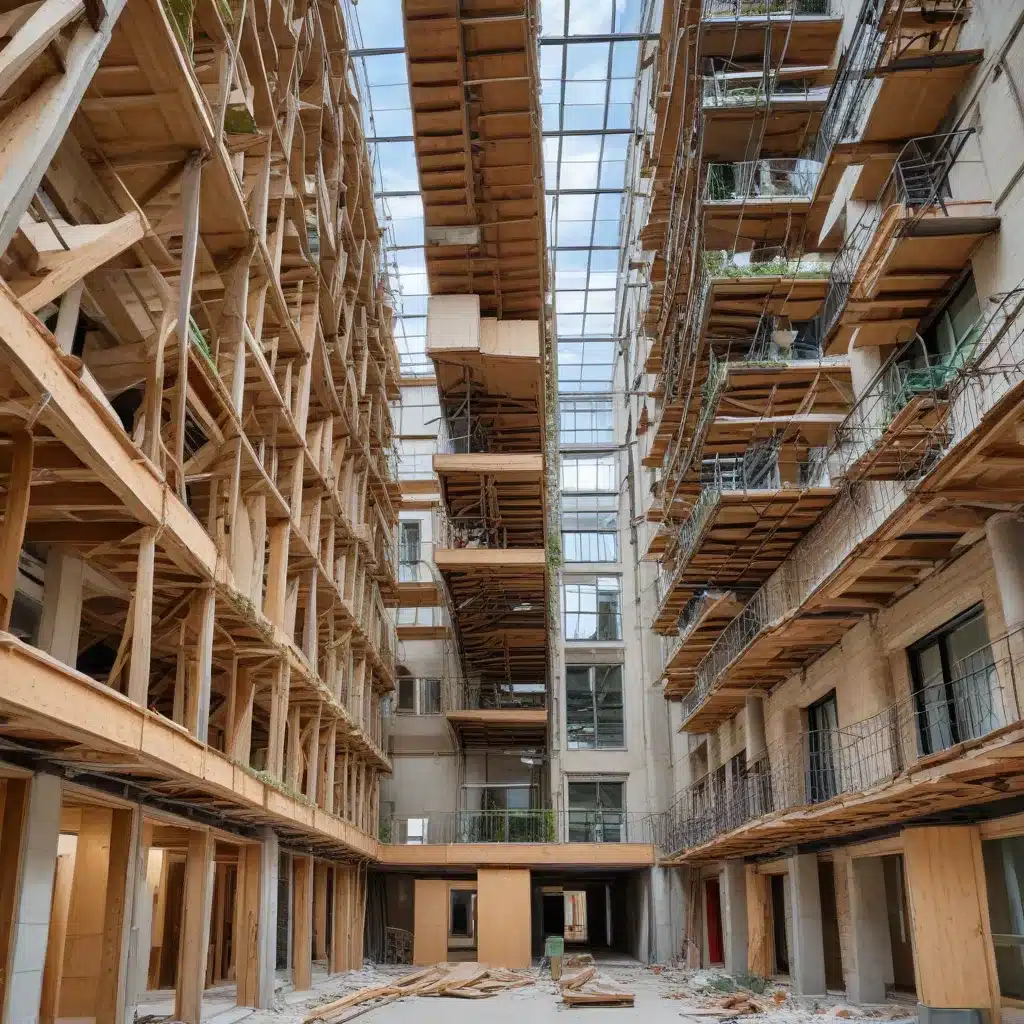
Sustainable Building Renovation: Strategies for Upgrading Existing Building Stocks to Net-Zero
The global transition to clean energy is well underway, with significant expansions in wind and solar capacity across Europe. However, one critical component often overlooked in decarbonization efforts is the existing building stock. Buildings account for nearly 40% of global energy-related greenhouse gas emissions, and the majority of today’s structures are expected to still be in use by 2050.
To achieve net-zero emissions targets, Europe must prioritize the sustainable renovation of its existing building infrastructure. This requires a multifaceted approach encompassing enhanced energy efficiency, strategic integration of renewable energy systems, and the embrace of circular economy principles. By employing innovative strategies, policymakers and industry stakeholders can unlock the vast potential of building retrofits to drive down emissions, enhance climate resilience, and deliver economic benefits.
Assessing Existing Building Conditions
The first step towards sustainable building renovation is to thoroughly evaluate the current state of a structure. This building condition assessment typically involves analyzing the building envelope, evaluating the mechanical systems, and conducting a comprehensive energy audit.
Building Envelope Analysis: The building envelope, comprising the walls, roof, windows, and doors, plays a crucial role in a structure’s energy performance. Inspecting the envelope for issues like thermal bridges, air leaks, and inadequate insulation can identify opportunities for targeted efficiency upgrades.
Mechanical System Evaluation: Assessing the condition and performance of a building’s heating, ventilation, air conditioning (HVAC), and hot water systems is essential. Identifying aging, inefficient equipment provides a clear path for implementing high-efficiency alternatives, such as heat pumps and condensing boilers.
Energy Audit and Benchmarking: A thorough energy audit, combined with benchmarking the building’s energy use against similar structures, reveals the facility’s energy consumption patterns and highlights areas for improvement. This data-driven approach guides the selection of appropriate retrofit measures.
Strategies for Energy Efficiency Upgrades
Once the building’s current condition is understood, the focus shifts to implementing proven energy efficiency strategies. These can include upgrading the building envelope, modernizing lighting and appliances, and optimizing mechanical systems.
Thermal Insulation Improvements: Enhancing the thermal performance of walls, roofs, and floors through the addition of insulation can significantly reduce heating and cooling loads. Advanced insulation materials, such as vacuum-insulated panels and aerogels, offer superior thermal resistance in limited-space applications.
Window and Door Replacements: Upgrading to high-performance, double- or triple-glazed windows and well-sealed doors can dramatically improve a building’s thermal efficiency and comfort levels.
Lighting and Appliance Retrofits: Swapping out inefficient lighting fixtures and appliances for LED bulbs and ENERGY STAR-rated models can deliver substantial energy savings with minimal disruption.
Integration of Renewable Energy Systems
Pairing energy efficiency upgrades with the strategic integration of renewable energy systems is a powerful strategy for achieving net-zero performance. This can include rooftop solar photovoltaic (PV) installations, geothermal heat pumps, and even small-scale wind turbines.
Solar Photovoltaic Installation: Rooftop or facade-mounted solar PV systems can generate on-site renewable electricity, reducing a building’s reliance on grid-supplied power and associated emissions.
Geothermal Heat Pump Integration: Geothermal heat pumps leverage the stable temperatures found underground to provide highly efficient heating and cooling, often with minimal electricity consumption.
Wind Power Integration: Small-scale wind turbines can be incorporated into building designs, particularly in areas with consistent wind resources, to supplement a structure’s renewable energy generation.
Circularity and Material Reuse
Sustainable building renovation must also consider the principles of the circular economy, which emphasize the reuse and recycling of materials. This approach can significantly reduce the embodied carbon associated with new construction materials.
Reclaimed and Recycled Materials: Incorporating reclaimed building materials, such as salvaged timber, stone, and steel, as well as recycled content in new products, can lower the environmental impact of retrofits.
Deconstruction and Salvage Practices: Carefully dismantling buildings slated for demolition, rather than simply razing them, can enable the recovery and reuse of valuable components and materials.
Waste Reduction and Diversion: Minimizing construction and demolition waste through careful planning, efficient material use, and diversion to recycling or repurposing facilities can further enhance the sustainability of building renovations.
Achieving Net-Zero Performance
The ultimate goal of sustainable building renovation is to transform existing structures into net-zero energy or net-zero emissions facilities. This requires a comprehensive approach that combines energy efficiency measures, renewable energy integration, and advanced performance monitoring.
Whole-Building Energy Modelling: Employing energy simulation software to model a building’s energy use, under various retrofit scenarios, can guide the selection of the most impactful upgrade strategies.
Passive Design Optimization: Maximizing a building’s passive design features, such as daylighting, natural ventilation, and thermal mass, can significantly reduce the need for active heating, cooling, and lighting systems.
Active System Optimization: Upgrading a building’s mechanical, electrical, and plumbing systems to high-efficiency, smart-enabled technologies can further optimize energy performance and enable advanced demand-side management.
Monitoring and Verification: Continuous monitoring of a renovated building’s energy use, combined with regular performance commissioning, ensures that the intended energy and emissions savings are being realized over time.
The transition to sustainable, net-zero building stocks is a complex challenge, but one that is essential for Europe to meet its ambitious climate goals. By leveraging a comprehensive approach to building renovation, encompassing energy efficiency, renewable integration, and circular economy principles, policymakers and industry stakeholders can unlock the vast potential of existing infrastructure to drive down emissions, enhance climate resilience, and foster a more sustainable built environment. Visit the European Future Energy Forum to explore more insights on Europe’s clean energy transition.






